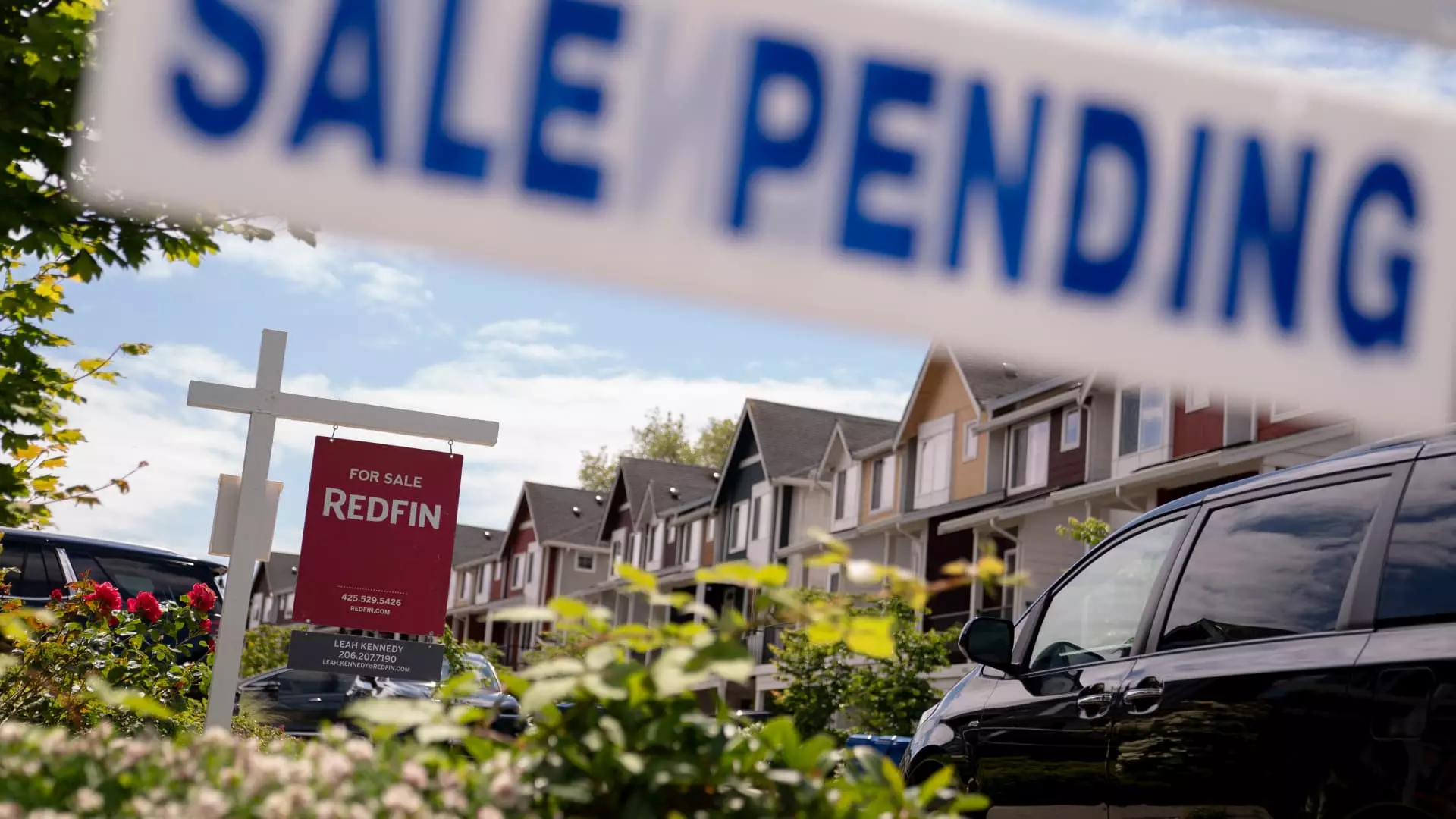The mortgage market is currently navigating turbulent waters, and the recent spike in mortgage rates to their highest levels since February has sent ripples through the housing sector. Homebuyers are scrambling to adapt, often leaning toward riskier loan options in search of lower rates. As these dynamics play out, it’s essential to analyze the implication of these shifts—not only for prospective homeowners but also for the overall economy.
Mortgage Rates on the Rise: A Hard Pill to Swallow
Last week’s data from the Mortgage Bankers Association showed a gnawing decline in total mortgage application volume by 8.5%. The decline isn’t merely an artifact of market fluctuation; it reveals a more troubling trend—consumer hesitancy driven by escalating mortgage rates. With average rates for 30-year fixed mortgages climbing to 6.81% from 6.61%, many are confronted with stark realities about home affordability.
What exacerbates the situation is the consistently rising home prices. While a comparative analysis shows applications for purchasing homes were still 13% higher than this time last year, the sentiment of prospective buyers suggests a tug-of-war between optimism and apprehension. Economic uncertainty hangs like a dark cloud, hinting that not even slight increases in demand can overshadow the stark challenges of higher-priced inventory.
Striking the Balance Between Risk and Reward
The burgeoning interest in adjustable-rate mortgages (ARMs) further illustrates the complicated relationship between buyers and the market. The appeal of lower initial rates can be seductive, especially when rates for two-thirds of borrowers have skyrocketed. However, with uncertainty lurking just around the corner, this choice carries inherent risks that should not be underestimated. A full percentage point jump in ARM applications in just one week underscores a trend where desperate times call for desperate measures.
For larger loan amounts, the temptation to go adjustable seems even more pronounced. But genuine caution should prevail, as the possibility of future rate adjustments could render monthly payments exorbitant when buyers least expect it. Experts like Mike Fratantoni remind us to keep an eye on economic trends that influence these volatile rates, particularly as home prices continue to rise unchecked in a still-recovering economy.
Inventory Challenges: More Listings, Less Movement
A surprising narrative unfolds regarding inventory levels. With a 30% greater active inventory on the market compared to a year ago, one might expect a subsequent surge in home sales. Yet the opposite occurs; sluggish sales contradict the premise that more houses equate to higher sales volumes. The market remains stifled—potential buyers remain cautious, often choosing to wait amidst rising economic anxieties.
The reluctance can be attributed to numerous psychological factors; consumer confidence usually thrives on stable interest rates, and with the volatility we face today, many would-be buyers are opting to sit on the sidelines. This exceeds mere statistical data, embodying a cautionary tale: the dynamics of demand and supply can swiftly be derailed by overarching economic concerns.
Future Prospects: Volatility on the Horizon
As we embark on a new week, preliminary reports indicate that mortgage rates may have calmed somewhat. Still, forecasters warn of unpredictable times to come. The housing sector is caught in a challenging limbo where rates can rise or fall rapaciously. Experts like Matthew Graham suggest skepticism is warranted.
Homebuyers hoping for relief must grapple with the knowledge that today’s favorable rate could quickly morph into tomorrow’s missed opportunity. A volatile environment necessitates a reevaluation of strategies and decision-making processes. Those planning to enter the market should not solely rely on trends of the moment—they should prepare for adjustments that could shake their financial footing.
In an economy trembling under the weight of uncertainty, the mortgage sector reflects broader societal tensions. The realities of rising costs and volatile rates necessitate far more than a standard approach for homebuyers. It requires insight, strategy, and a good dose of realism to navigate these treacherous waters effectively.

